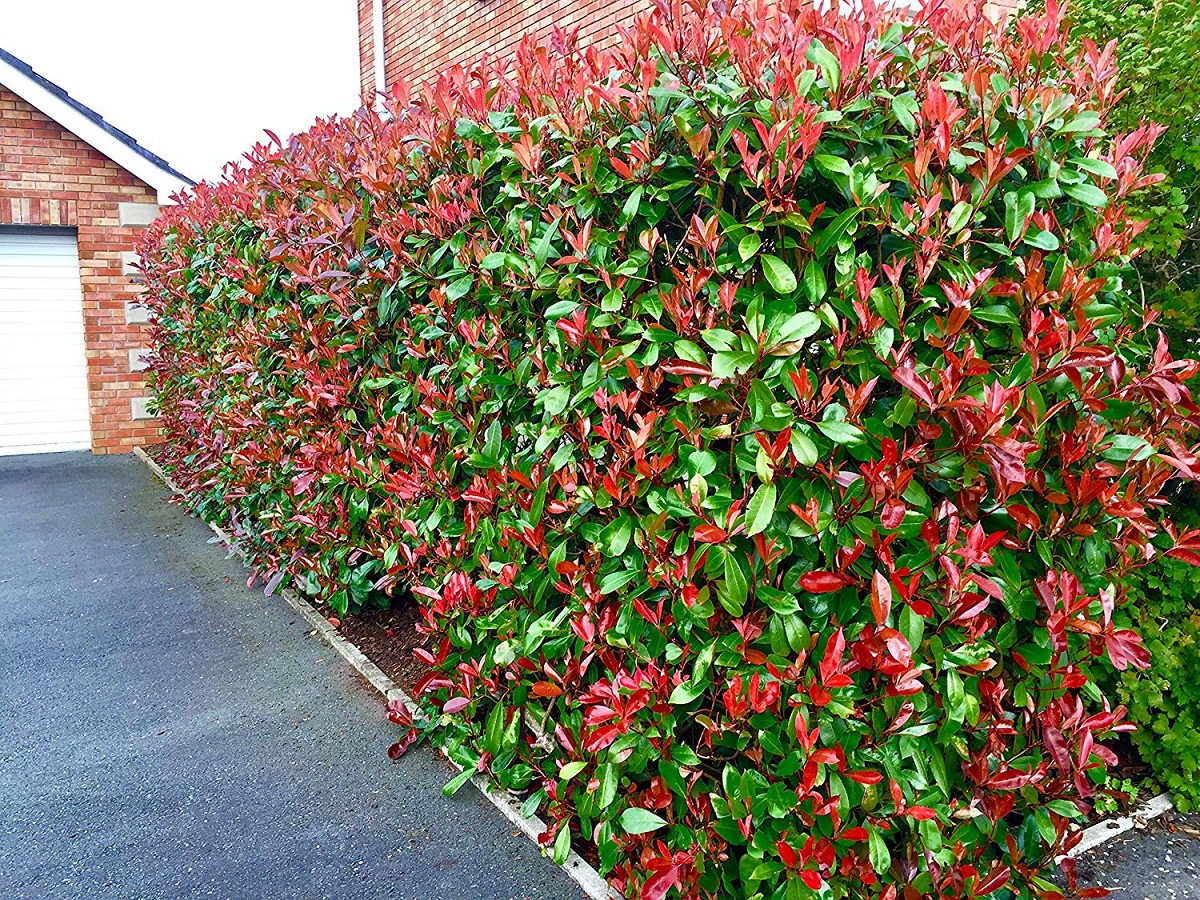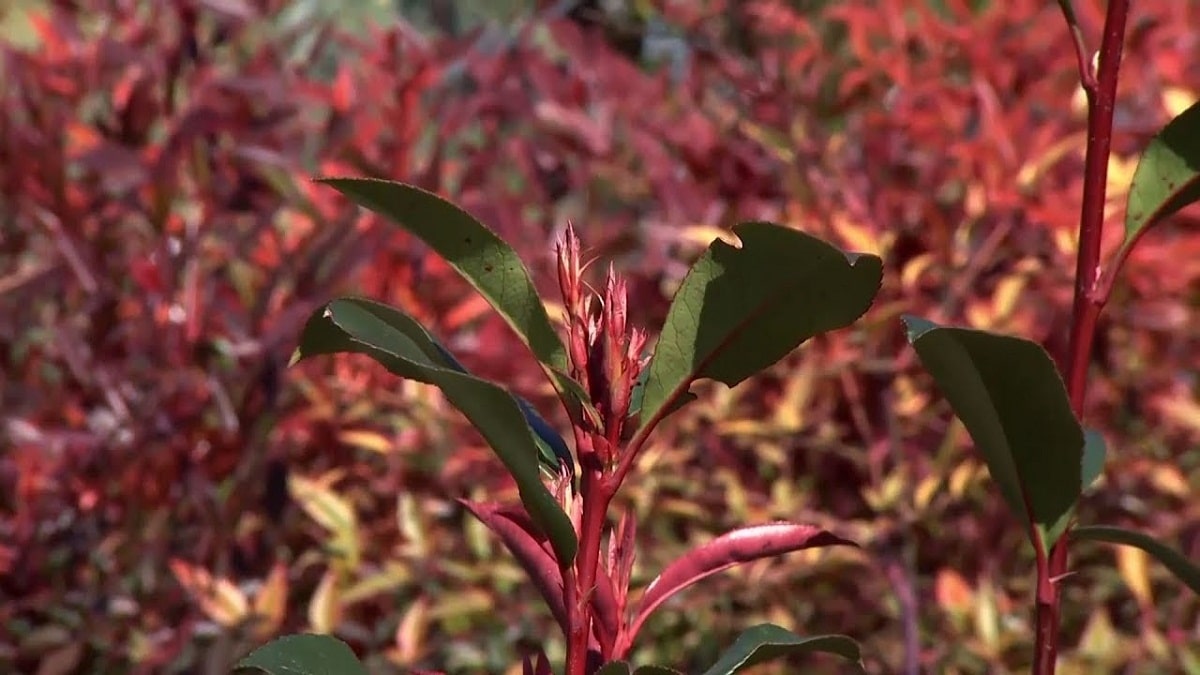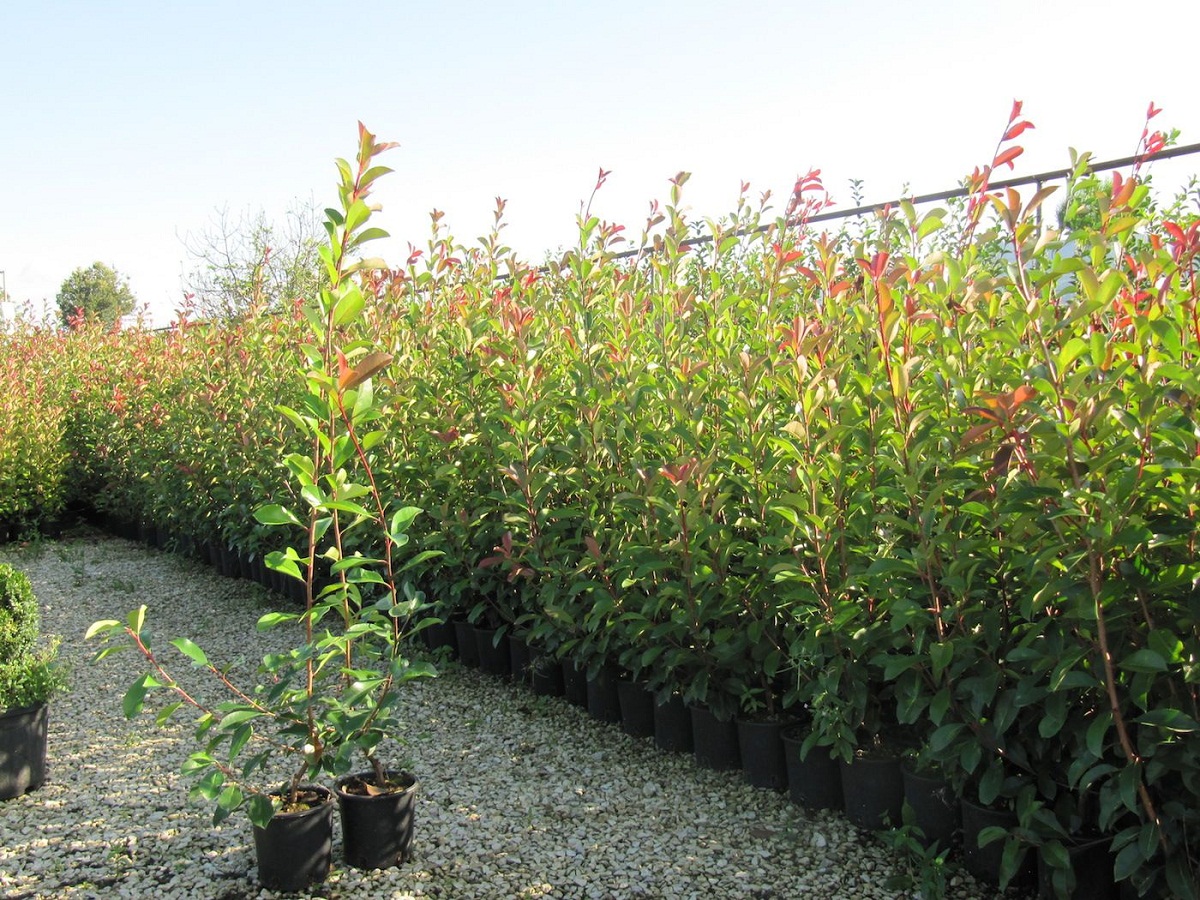
La Photinia Red Robin it is a shrub that displays a color that will light up the look of the garden and it has a myriad of characteristics that make it convenient, among which are its resistance to different climates and easy cultivation. A shrub that is grown all over the planet and you can also have it in your home.
When we refer to the PhotiniaWe are not only talking about the species in which we will delve today, but there are a large number of species within its family. These are usually short shrubs or trees. They can be found in different types, among which are deciduous and evergreen.
Origin and distribution

The characteristic places where this bush grows naturally is in the East, more precisely in Thailand, India and Japan. This species develops with greater success in areas with temperate climates for most of the year, which is why there are also usually some areas of the north of the American continent where native species of this shrub are known.
The ease of cultivation has made this plant native to other places, reach almost everyone, also due to its strong ornamental power and its unique coloring, being a shrub and tree with a small characteristic and well known around the world, but its origin is that of Asia.
Features Photinia Red Robin
Belongs to Rosaceae group, but unlike these, does not reach a very considerable height, although it does show the same characteristics. Among the most important aspects that it gathers, it is possible to highlight the resistance they have against different inclement weather, demonstrating a robustness that makes them one of the most chosen in the world of ornamental shrubs.
It will grow in your garden in a rounded way and showing a large number of leaves and flowers that make it very compact. Another of the main characteristics is its rapid growth, achieving in a few months from its plantation, to achieve a diameter and a height of approximately 1,5 meters and in the species that become larger, to even reach 3 meters, both in diameter and in height.
One of the main characteristics of its leaves is that, unlike the flowers, these are kept in the plant throughout the year always showing a greenish color, which becomes brighter in the warm months and dulls a bit in winters or low temperature seasons.
On its edges, they are jagged and green is not the only shade that appears on them, but you will also see intense red leaves, something that also makes them very ornamental, forming a magnificent composition with the flowers and the entire bush.
These red tones of its leaves are achieved in the upper part of the plant, while down, the tone of the same gets much darker, forming a gradient that gives it a decorative appearance that stands out in all types of gardens.
During the fall and winter months, we will only see the leaves, but its flowering begins in spring, when small inflorescences begin to grow whose shape is basically circular and has five petals, which in addition to offering another color palette to the plant, also give it a particular aroma.
These flowers will appear during the months of April and May and are very small, in contrast to the general growth of the plant. These flowers will also give rise to small fruits, when the summer heats are already leaving and autumn begins.
These show a blue color in their growth that contrasts in the wide composition of colors that it presents and as it matures, they will darken. That will be the moment when the birds begin to feed on them. This fruit is not considered edible by humans, but is often used by birds for food.
Reproduction
It is a plant whose reproduction is achieved very easily, both by cuttings and by seeds. The cuttings can even be obtained from the remains that have been removed in a pruning and they will grow quickly and effectively.
The seeds are dispersed by the droppings of the birds, which have used their fruits, and their plants usually always grow healthy, resisting any type of diseases or pests. This is the Photinia Red Robin, a plant of the most chosen around the world for its colors, giving it an ornamental appearance without equal.
Care

Surely, the Photinia Red Robin will grow best in a garden where there is plenty of time for good direct sunlight, but It's not the only way it grows. It will also do it in places where the lighting is partial and it can even grow, but in a slightly less robust way, in places where there is only natural lighting and full shade.
It is a plant that grows with great power in fertile soil and what you will need is that it has a good drainage capacity, so a compound between earth and sand will be the best way for it to develop. Although its best growth in garden soils is notable, you can also grow it in pots, to have it on apartment balconies or terraces.
In the gardens particularly, forms a very beautiful composition if around it you have cultivated flower plants of very light or very dark colors, which in both situations will contrast with the red of its leaves, giving your garden a special color.
Irrigation will be different if you have this shrub in a pot or if you have it in the soil in your garden. In your pot, the plant will need more regular waterings, as well as in the months with higher temperatures. On earth, plants can reach with their roots more humid areas and the deeper they reach, so the moments in which to give them water should not be so often.
Finally, they never gave the scientific name. What a pity!
Hi Cyril.
In fact, it has been said: Photinia 'Red Robin' : )
Yes it is true that the full scientific name is Photinia fraseri 'Red Robin', but much more is known by eliminating Fraseri Of the name.
Greetings.